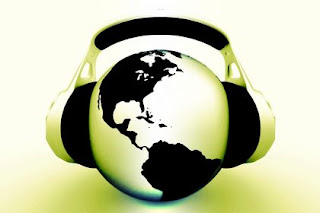The first question, and probably the most challenging one for the new podcast host, is what are the things I need to create and share my show?
What you (minimally) need is:
What you (minimally) need is:
- equipment to record and edit your episodes
- a means of posting the episodes themselves online
- a way of letting listeners/viewers know that the new episodes are available
Here's what I use for my shows. I'm not going to talk about video equipment since that's a whole world different when it comes to recording and editing than audio equipment. I'll talk about that in a future installment.
Recording Equipment
Software
To record episodes, you'll want something that allows you to record multiple tracks of audio.
For normal recordings I use Audacity, available here. It's free, available on Linux, Windows and the Mac, and supports all standard audio formats. It uses its own format for locally storing a project, but you can export the audio to MP3, Ogg Vorbis, WAV, etc. Though for podcasts I recommend MP3.
And during exports, you can add most ID3 meta data to the episode.
In a later installment I'll talk about how to use Audacity in more detail.
Microphone
Don't skimp on this piece, but do pick something in your budget. Remember: you get what you pay for, and buying a cheap microphone results in bad audio quality. You want something that produces a warm sound. A decent USB headset with built-in microphone (like my Microsoft Lifechat LX-3000) works great for this, and you can use it for other things such as recording interviews, which is another installment.
Other Equipment
If you want to use a standard studio microphone (which is what I do for normal episodes), you'll want to also get a USB mixer. A certain cohost of mine gave me a very nice microphone and mixer setup that matches what he uses for his segments. And I found that it provides the best audio quality to date for the show.
Posting Episodes Online
After you've produced your episode, you need to put it up online so listeners can get to it.
The cheapest way to do this is to post the episodes on archive.org. The only caveat is that you need to release your audio under some sort of free or unencumbered license. My shows are all released under Creative Commons Share-Alike Non-Commercial (CC-SA-NC) licenses. People are free to take the audio, cut it up and use bits of it, so long as it's for non-commercial results (they can't charge for the results), they have to give a reference back to us and they have to allow others to take their work and do the same.
After you've uploaded your episode to archive.org, you can then get a link directly to the MP3 file that you would put into your podcast feed. That way listeners can download the file. More on that in a later installment.
Notifying Listeners
To notify listeners that you have a new episode available, you have to create an RSS feed, which is simpler than it sounds. The first step is to create a blog, and the second is to add it to podcast aggregators like iTunes, which will also be a later installment.
Another thing to do is to setup a feed redirector, such as Feed Burner, and tell listeners to subscribe to that. Setting that up is also a later installment.
The cheapest thing is to create a blog on a free site like Blogger.
After you've uploaded your MP3 file to archive.org, you create a new blog entry on your site. In the lower-right corner where it says "Links" you copy the MP3's URL (being sure to change "https" to "http" if your URL has that) into both the "Title Link" and "Enclosure Link" fields, and setting the mime type to "audio/mp3".
Once you publish the new blog entry, anybody who is subscribed to the RSS feed for the blog will be notified that a new episode is available.
Conclusion
Setting up a podcast feed is pretty simple IF you have the right tools and services in place. With these first few steps you're now well on your way to being a podcaster.

Comments
Post a Comment